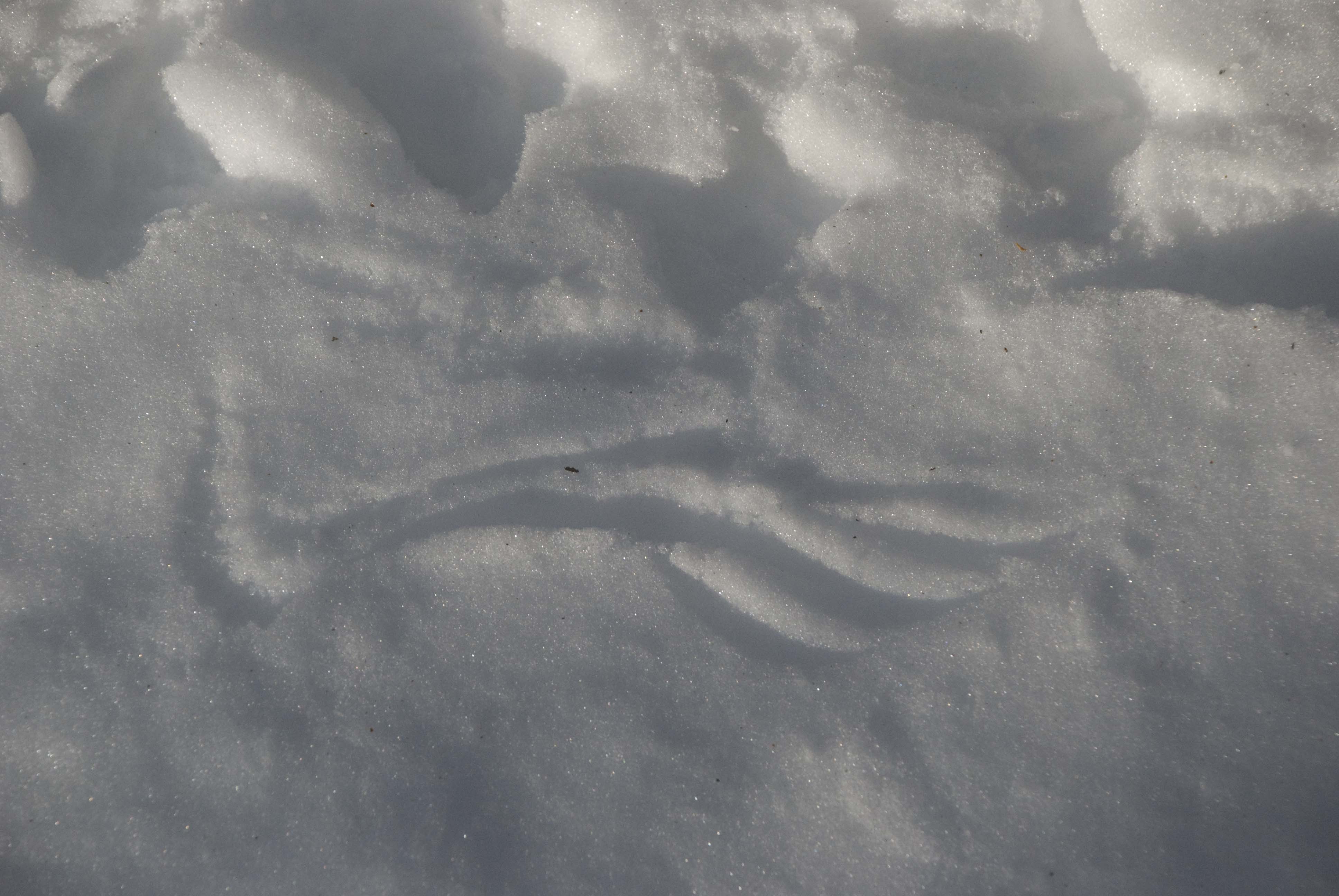Winter Tracks
My wife and I arrived in Manhattan at noon on December 26th, just a few hours before the arrival of the big blizzard. Reportedly the sixth biggest snowfall in recorded history, it dumped 20 inches on the city. Even in the current depressed property market, NYC real estate goes for upwards of $1,000 per square foot, and snow can’t pay rent so there is precious little space to put it. Much of it was trucked out of the city by Wednesday, allowing us to get back on the road to New Hampshire.
I had one last conservation easement to check before the New Year, a large wooded parcel on Apple Hill Road in Nelson. I arrived at the property at about 10am Thursday morning. The snow was still fresh and dry, perfect conditions for tracking. For three days the white parchment lay on the ground, unblemished by rain or thaw, recording in clear detail every footfall. Squirrel tracks were abundant, faithfully drawing the eye toward a tree, whence the squirrel would ascend where the snow could not.
As I neared a marsh toward the back of the lot, the carpet of snow revealed a different and more abundant life; moose, snowshoe hare and ruffed grouse. No longer shaded by hemlock and white pine, light reached the forest floor, allowing poplar, birch, and alder saplings to flourish. The wet soil encouraged the growth of winterberry and other fruiting shrubs, and the combination of cover and food was perfect for the hare and the grouse. The protective cover of the understorey provides both with a first line of defense against goshawk, bobcat, and the other daily threats they face.
Their telltale tracks were everywhere. Both have adaptations to allow them to ride above the snow; feathering between the toes for the grouse and large “snowshoes” in the case of the well-named hare. I was fortunate to find the immaculate print of a ruffed grouse wing. The photo also shows the bird’s tracks and scat. Meade Cadot, who has an immense knowledge of the wildlife of New England, helped me to interpret the photograph. When conditions are suitable, ruffed grouse often roost under the warming blanket of snow, and when they burst free in the morning, it records their waking moment.
The grouse and the hare are also favored prey of the bobcat, but studies in the Maritime Provinces have shown that when the snow is soft and deep, the “snowshoe” hare has an advantage over the bobcat and usually escapes. These conditions favor the larger pawed lynx, which replaces the bobcat in the north.
The Harris Center is offering a tracking and winter mammal workshop, comprising six 2-hour workshops on Thursday afternoons beginning January 27th. Jeff Littleton of Antioch College will be instructing. Call the Harris Center in Hancock at 525-3394 for more information or to sign up.

No comments yet.